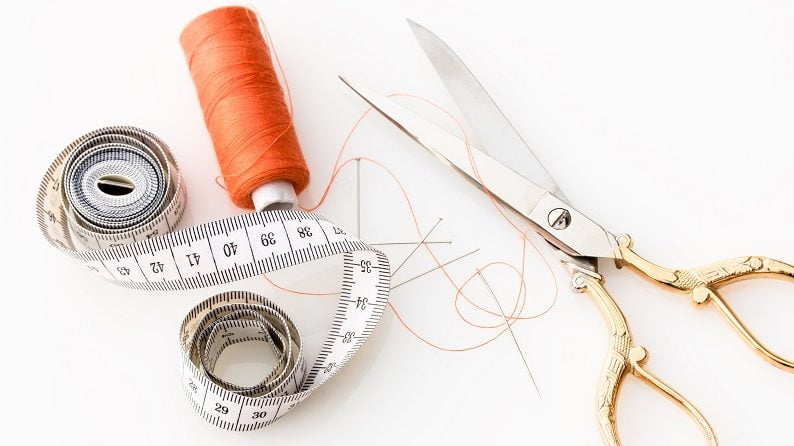People tend to use different kinds of sewing machines for different purposes. The frequency of use is not the same for everyone. Some use it frequently, while others use it occasionally. For example, beginner’s sewing machines are not used too often. Regardless of the types and usage patterns, a sewing machine should sew for many years perfectly if we take care of it properly. Sewing machine maintenance comprises of cleaning and oiling. Maintenance procedures can vary for different brands. For example, some machines have built-in oiling system. Therefore, oiling might not be appropriate for these machines. The best practice will be following the instruction booklet. In this article, we will try to give you a generalized idea about the maintenance of your sewing machine. But we will suggest you check your manual booklet before the operation. If you do not have an instruction booklet, contact the seller.
Equipment needed for sewing machine maintenance
- Small and large screwdriver
- Wrench
- Cleaning fluid or oil
- Cake pan for fluid soaking
- Cleaning brush
- Tweezer
- Testing fabric
- Cloths for cleaning
- Rubber gloves
- Flashlight
- Pocket knife
- Hammer
- Vacuum cleaner with air sucker
Sewing machine Cleaning Procedure
- Safety first: Make sure that you have unplugged the machine from the electric socket.
- Unplug the foot pedal if you have any.
- Bobbin and needle: Remove these from the machine. If you have a bobbin case, remove it as well.
- Do not trust your memory: Before you disassemble your machine, take pictures of every single small parts. This is a common disaster that you will forget the actual position of the parts when you will go to assemble these.
- Disassemble small parts: You can remove the small parts if you are confident enough that you can set these again after you finish cleaning.
- Clean the dust and lint with the vacuum cleaner. Use the air sucker to get rid of the dust. You can also blow the dust which you can not suck.
- After using the vacuum cleaner, use the cleaning brush to remove the dust which is difficult to remove.
- You might find some dust which you can not remove due to attaching with oil. Use the cleaning cloth and tweezer to get rid of these.
Oiling and lubricating of a sewing machine
- Check the instruction manual first. All sewing machines might not need to give oil if there is an in-built lubrication system.
- If you still think you need oiling for better performance, then discuss it with the seller. Do not use cooking oil for sewing machine lubrication.
- Take the oil in a dropper and put one or two drops of oil, not too much. Find the places to lubricate in your instruction manual.
- During lubricating, turn the wheel by your hand so that the oil spreads throughout.
- After you have done with oiling, take some scraps and sew these to avoid oil staining when you will be sewing your fabrics.
- Finally, take a piece of cleaning cloth and wipe off the oil if present on the body of the machine.
Maintenance tips
Cover up the machine
Always try to cover the machine when it is not in use. Remember, dust is the enemy of sewing machines. Make a nice cover by yourself or you can use the one which you got during purchasing it. Make sure that the machine is not exposed to direct sunlight when you are storing it.
Choose correct fabric
Do not use hard fabric if your machine is not built for it. The maximum of the low budget sewing machines can not deal with fabric like denim and jeans. Even when you are operating in multiple layers, make sure that your machine can handle it. Check the instruction manual to get an idea about it.
Appropriate needle and thread
Do not use needle and thread which are not compatible with your machine. You should also change the needle and thread as per the guideline when you are changing the fabric.
Cleaning frequency
Cleaning your machine every 8 to 10 hours is advised. If you are working for a long project, you might work for a few days. Do not leave your machine uncleaned for the whole period of time. You must at least blow the dust every few hours.
Final words
The discussed method above is for regular sewing machine maintenance. You need to keep your sewing machine under preventive maintenance once every two years by a professional. This will help your machine tuning up properly. If you take these actions, I hope that you will be able to run your machine for a long time with frequent sewing machine repair.

